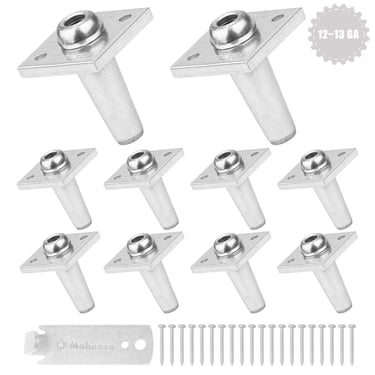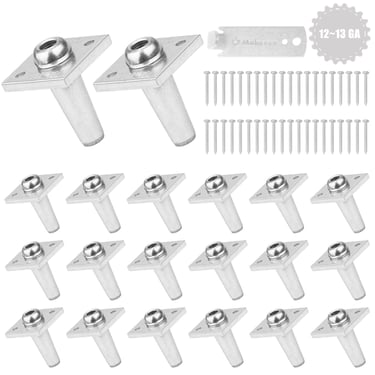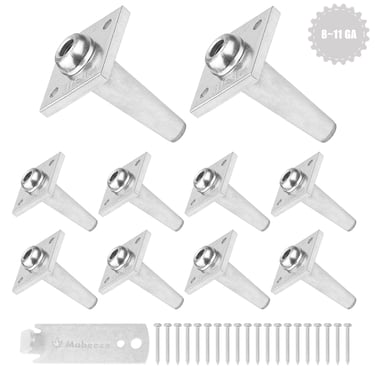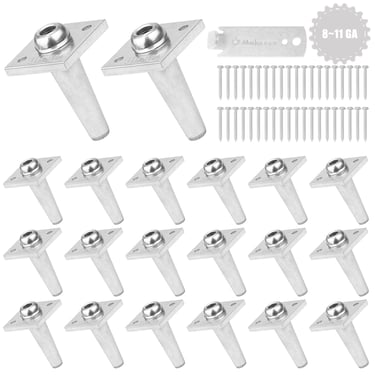Why One-Way Anchor Wire Vices Are the Ultimate Tool for Trellis Gardening
Discover why one-way anchor wire vices are the best tool for trellis systems. Learn how they simplify wire tensioning, boost durability, and support healthier plant growth in any garden setup.
GARDEN


Why One-Way Anchor Wire Vices Are the Ultimate Tool for Trellis Gardening
You can have the best compost in the world, plant the most eager vines, and space everything just right, but if your trellis is sagging like an old clothesline by mid-July, none of it matters. That’s where a clever little thing called a one-way anchor wire vice comes in.
They’re small, yes. Unassuming. But once you’ve used one, you won’t go back to fussy knots, slack wires, or garden twine that snaps when the cucumbers get ambitious.
In this piece, I’ll walk you through what makes these humble wire vices a garden essential, why they’re worth slipping into your toolkit, how they make trellising simpler and sturdier, and what to expect once you’ve got them in place. No jargon, just the good stuff.
Let’s dig in.
This post may contain affiliate links and I may receive a commission for purchases made through links.
If you’ve ever wrestled with sagging trellis lines or spent twenty minutes trying to rig something that holds for more than a week, this part’s for you. One-way wire vices do what they promise: they grip, they hold, and they don’t let go.
No clamps, no fancy tools, no mid-season re-tightening. Just thread the wire through, give it a tug, and it stays put. That’s it. You’re left with clean, tensioned lines ready to carry the weight of your climbing tomatoes, pole beans, or grapes with grace.
It’s one of those things that feels like cheating, but in the best possible way.
1. Tight Lines, No Drama
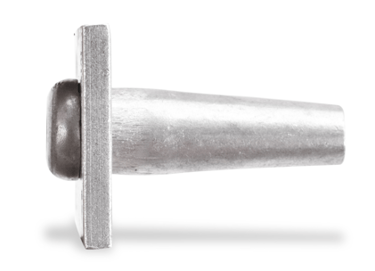

A garden lives outside, and anything that lives with it needs to stand up to sun, rain, wind, and whatever else the seasons throw around. Thankfully, these little vices are built from the sort of stuff that doesn’t blink at a downpour.
Most are made from galvanized or stainless steel, which means no rust, no breakdown, no flaky bits crumbling off mid-August. They’re made to last. Not just through one season, but many. That’s good news for your budget, your plants, and your peace of mind.
Set them once, trust them always. That’s their whole deal.
2. They Don’t Rust, Rattle, or Quit


Not everyone’s a toolbelt type, and that’s fine, these vices don’t ask for much. A simple small hole drilled through your post is all these anchors need. No knots. No YouTube tutorials on sailor rope techniques. Drill the hole, place the anchor, then insert the wire from the other side, pull it snug, and you’re locked in.
They fit most common wire gauges, which means you can use them for just about any setup: backyard beans, decorative garden arches, even full-blown vineyard rows if you’re feeling ambitious. Whether your space is measured in feet or acres, they play along just fine.
3. No Fiddling, No Fuss
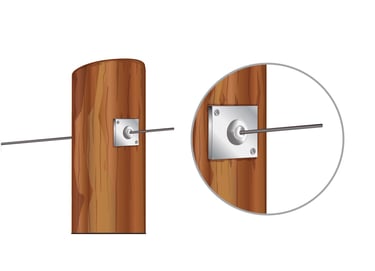

Strong support changes how your plants grow. When vines have something solid to reach for, they lift off the ground, breathe better, and produce more. That’s not just good gardening, it’s smart growing.
With one-way vices keeping your wires tensioned and steady, you’re building a better framework for everything that climbs. Less mildew. Easier harvests. Happier plants.
And once you’ve seen what a tidy, vertical garden can do? You won’t want to go back to anything that flops.
4. Let Your Plants Climb Like They Mean It


In the world of gardening, it’s often the little things that change everything. One-way anchor wire vices may not look flashy, but they bring serious ease and strength to your trellis setup. Fewer headaches. Fewer sagging wires. Better support for the plants you’ve worked hard to grow.
Whether you’re staking tomatoes in a raised bed or managing rows of climbing vines, these tiny workhorses give you control, consistency, and peace of mind, without overcomplicating a thing.
Simple to use. Built to last. Surprisingly satisfying.
Now that’s a tool worth keeping close.
Final Thoughts:
Small Tool, Big Impact
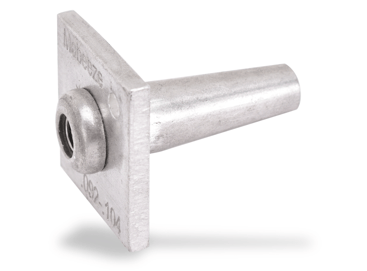

Click on the images to buy one-way anchor wire vices

